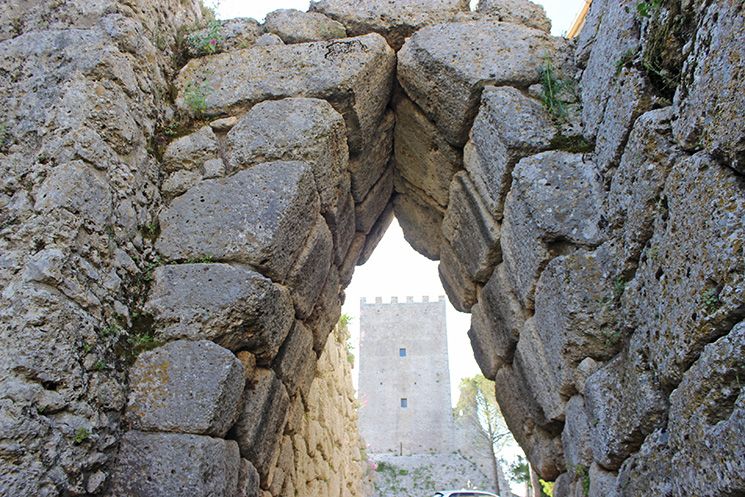The Fortified cities: from Mythology to History

Informazioni
Contatti
![]()
![]()
Viste guidate interne : ![]()
Prenota la visita guidata con il Centro Guide Cicerone:![]() 0775.211417 - 349.4981226
0775.211417 - 349.4981226![]() Fax: 0775.859011
Fax: 0775.859011![]() This email address is being protected from spambots. You need JavaScript enabled to view it.
This email address is being protected from spambots. You need JavaScript enabled to view it.![]() www.ciceroneweb.it
www.ciceroneweb.it
Multimedia
Mappa
Servizi e Pacchetti Turistici
A distinctive feature of the ancient population of Ciociaria are the towns defended by imposing walls and in a defensive and strategic position on top of a rise. Nearly all of them have very old origins and in fact, according to mythology, they were founded by the god Saturn. They developed in pre-Roman times as Hernician and Volscian centres and later on they became Roman towns adorned by sumptuous buildings. Their erection, mostly in polygonal walling, that is to say with enormous dry-embedded blocks of stones of impressive dimensions, was attributed to the mythical Pelasgians.
Ferentino is the most significant example of a fortified city because the superposition of different building techniques of its walls show how they changed through time: built in polygonal walling at first, they were then raised in square stone blocks and finally restored in the Middle Ages. The acropolis, a masterpiece of civil engineering, is supported by a great rampart that still shows the names of the local magistrates who saw to its erection at the end of the 2nd cent. BC, the same time when also the indoor market was built.
The theatre, still visible near the Sanguinaria Gate, was built in the 2nd cent. AD. Alatri, another centre of the Hernician confederation, is surrounded by extraordinary polygonal walls about 1 and a half-mile long. Its acropolis, one of the grandest monuments of Ciociaria, stands right in the middle of the town centre. Its trapezoid shape is supported by a polygonal walling from 20 to 50 feet high that marks the limits of an open space where on the ruins of a Roman temple the Cathedral was built. In Veroli, another town of Hernician origins, near the citadel of St. Leucio, the ancient acropolis, the remains of great polygonal walls with many main and minor gates can be visited. In the town centre, in the yard of the medieval Reali house, it is possible to admire the Fasti Verulani (1st cent. AD).
It is a long Latin inscription that lists the lay and religious festivals and the periodical markets of the city and it represents a unique document of Veroliís public life at the beginning of the Empire. A really suggestive walk takes to Arpino, an ancient Volscian centre, where Caius Marius, Marcus Tullius Cicero and Marcus Vipsanius Agrippa, Augustus’ son-in-law and builder of the Pantheon in Rome were born. On the rise of Civitavecchia, the ancient acropolis that overlooks the town, ruins of defensive work in polygonal walling are still visible. The main gate is covered with the famous “pointed arch”.
This is a very ancient technique dating back to the 7-6th century BC that makes use of blocks gradually jutting so to form an apex. Atina too is a fortified town with polygonal walling dated to the 4-3rd cent. BC whose ruins can be visited along the Sferracavallo Road and near the cemetery. Anagni, the Hernicians’ holy town, is on the contrary surrounded by walls in square stone blocks of the 4-3rd century BC that support the spur of the acropolis. In the Middle Ages a cathedral was built on its open space on the structure of a pagan temple.
The walls include the extraordinary “Arcazzi” structure, a stonework on pillars and arches directly derived from eastern Grecian models. Anagni was famous for the large number and great importance of its sanctuaries. With the coming of Christianity churches replaced pagan temples and it became the “Popes’ city”.